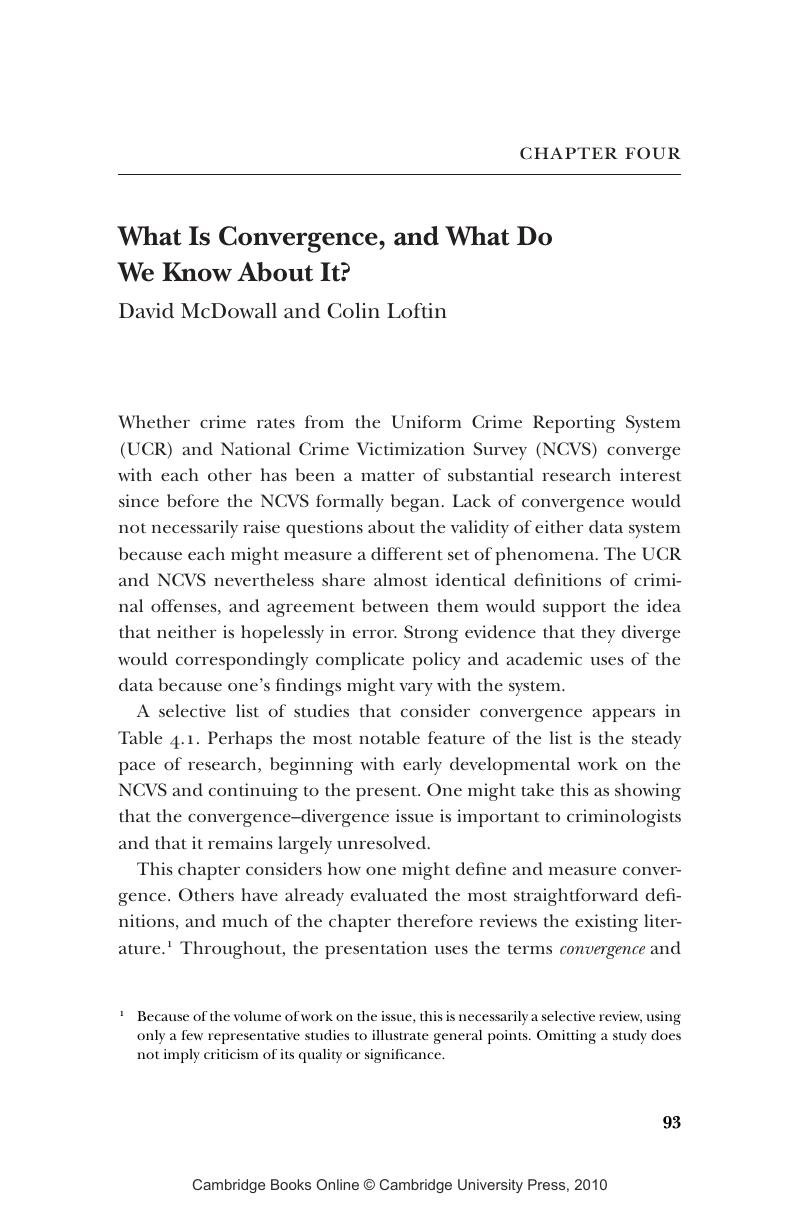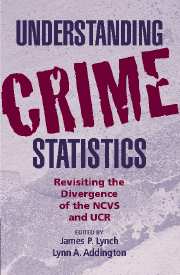Book contents
- Frontmatter
- Contents
- Acknowledgments
- Contributor Biographies
- INTRODUCTION
- OVERVIEW OF THE TWO NATIONAL MEASURES OF U.S. CRIME
- DEFINING DIVERGENCE AND CONVERGENCE
- 4 What Is Convergence, and What Do We Know About It?
- SOURCES OF DIVERGENCE IN THE NCVS
- SOURCES OF DIVERGENCE IN THE UCR
- CONCLUSION
- Index
- CAMBRIDGE STUDIES IN CRIMINOLOGY
- References
4 - What Is Convergence, and What Do We Know About It?
Published online by Cambridge University Press: 23 December 2009
- Frontmatter
- Contents
- Acknowledgments
- Contributor Biographies
- INTRODUCTION
- OVERVIEW OF THE TWO NATIONAL MEASURES OF U.S. CRIME
- DEFINING DIVERGENCE AND CONVERGENCE
- 4 What Is Convergence, and What Do We Know About It?
- SOURCES OF DIVERGENCE IN THE NCVS
- SOURCES OF DIVERGENCE IN THE UCR
- CONCLUSION
- Index
- CAMBRIDGE STUDIES IN CRIMINOLOGY
- References
Summary

- Type
- Chapter
- Information
- Understanding Crime StatisticsRevisiting the Divergence of the NCVS and the UCR, pp. 93 - 122Publisher: Cambridge University PressPrint publication year: 2006
References
- 2
- Cited by

